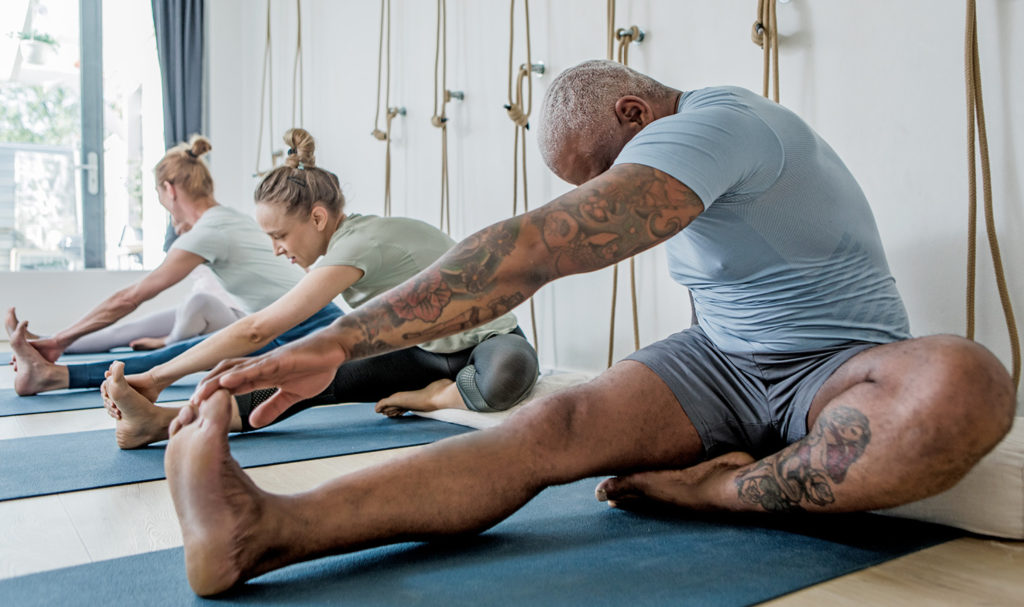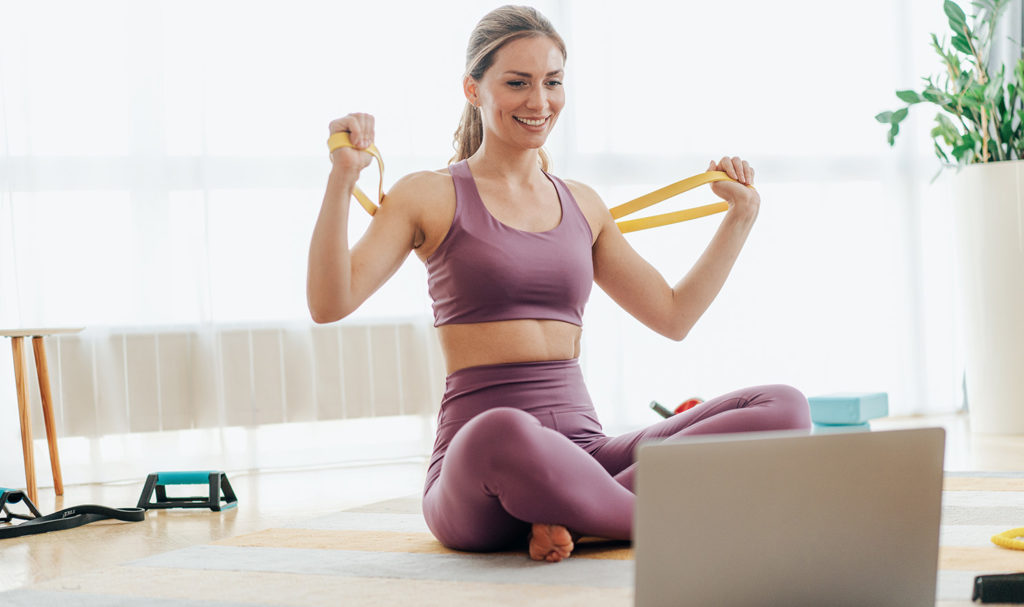Last Updated: April 24, 2024
Currently, there are 36.7 million people who practice yoga in the U.S. The influx of practitioners across the nation also means that the demand for yoga teachers is on the rise—so the likelihood of yoga risks is, too.
With more than 36 million people in the United States practicing their daily savasana, yoga teachers face an array of exposure to risks and potential lawsuits.
While we know that your job requires you to “fix” your students’ posture while they’re in a pose, your good intentions could result in a serious injury.
We’ll discuss five real-life claims against yoga instructors that have been featured in various news headlines and what measures you can take to minimize risks.

Yoga Claim Examples (That Liability Waivers Might Prevent)
Claim Example 1: Negligence to Student Needs
A popular New York yoga teacher was sued after one of her clients fell through the window of a sixth-floor yoga studio. The filed claim stated that the instructor allowed an excessive amount of people into the studio space which forced the client to perform a handstand too close to the window.
Claim Example 2: Outdoor Class Injury
A man taking a free outdoor yoga class in a Miami park was practicing the corpse pose when an iguana fell out of a tree and hit him in the face. The class was being live-streamed on the teacher’s social media page when the accident happened, allowing her to have proof for a possible claim that the accident was truly just an unexpected accident.
Claim Example 3: Slip-and-Fall Lawsuit
One New Jersey yoga teacher was sued after a student slipped and fell on sweat on the floor of a yoga studio after a hot yoga class. She injured her elbow and needed surgery.
The Life Time Fitness gym where the accident happened was also named in the lawsuit. While the student’s claims were dismissed by the court, the teacher was still stuck paying thousands in legal defense costs.
Claim Example 4: Damage to Gear and Equipment
A driver accidentally lost control of their car and crashed through the window of a Boston yoga studio. Luckily the studio was closed at the time of the crash, but there was significant damage done to some of the gear and equipment the yoga teachers provide for their classes.
With the right coverage, they were able to file a claim and have help replacing the damaged items.
Claim Example 5: Accidental Death During a Class
Former NBA player Brandon Hunter reportedly collapsed at the end of a yoga class and was taken to a hospital where he was unable to be resuscitated. Because he suffered a medical incident in the yoga studio that may have been triggered by his participation in the class, the yoga teacher and studio could be held liable for his unexpected accidental death.
How to Use a Yoga Liability Waiver to Minimize Your Risks
A yoga liability waiver is a form students sign before enrolling and participating in your classes. It is a “release of liability,” which means your students cannot hold you responsible for injuries that occur to them during your class.
The first step in building your waiver is assessing your risks.

Conduct a Yoga Risk Assessment
Have you taken a closer look at your gear or your studio lately? It might be a good idea since it can help you assess the risk of injuries, illnesses, or damages.
Knowing your risks helps you maintain a safer environment for your students, reduces the risk of an accident happening, and allows you to identify items that can be added to your waiver.
You can easily assess your risks in a few minutes today. Here’s an example of the steps of determining a yoga risk assessment:
- Identifying potential hazards within your studio and with your equipment
- Evaluating the risks associated with the potential hazards, like possible injuries
- Finding actionable solutions to eliminate the risks and promote safety
- Establishing a regular habit of reassessing risks and identifying new risks
You’ll want to be meticulous about checking gear, ensuring your space is safe, keeping up with equipment maintenance, regularly cleaning your space, and analyzing your efforts in lowering your risks.
If something you’re doing isn’t working, try to find a new solution. And if you can’t completely eliminate a risk, do your best to control and lower it over time.
Grab our free yoga risk assessment checklist to help you make your studio a safer space.
Grab Your Free Yoga Risk Assessment Checklist
Ask Your Students to Sign a Liability Waiver for Yoga
When a student signs a waiver, they agree to assume the risks of taking your yoga class. This can help protect you and your business from being blamed for accidents you didn’t cause.
Make sure your yoga liability waiver includes:
- Details of the class, including the location, activities, and level of training needed
- The physical condition a student should be in to participate
- A requirement for students to alert you to limitations or medical conditions
- Possible risks and injuries a participant may face, including “known and unknown” risks
- A voluntary acknowledgment and acceptance of risks
- Release and indemnification clauses to protect your business
- A place for you and the student to sign and date the document
While a waiver doesn’t prevent accidents from happening, it can help reduce potential litigation.
Even if you have a waiver, you might run into a student who still tries to sue you. Lawyers are trained to find loopholes in waivers, so it’s best to get legal advice before using a liability waiver.
You can download a copy of our free yoga liability waiver to use in tandem with yoga liability insurance.
Get Your Free Yoga Liability Waiver
NOTE: A waiver does NOT take the place of insurance or guarantee legal protection.
Invest in Continuing Education
A recent study by the Yoga Alliance shows there has been a steady increase in the number of people practicing yoga each year. As yoga grows in popularity, new trends (like puppy yoga and snowga) start to emerge.
It’s important to stay on top of the latest practices to expand your teaching opportunities and help you learn the best safety tips to lower your risk of accidents.
It also helps you keep a current and valid yoga teaching certification. This can be done by investing in continuing education programs, like those offered by Your Yoga Flow and YogaRenew.

Get the Best Liability Insurance for Yoga Teachers
You can easily cover your asanas with yoga teacher insurance from Insurance Canopy. Our policy starts at $129 per year, whereas retaining an attorney can cost anywhere from $50–$1,000 per hour. You can even opt for monthly payments on our policies for as low as $12.50 per month!
Learn more about liability insurance for yoga instructors and get covered in 10 minutes or less today.


